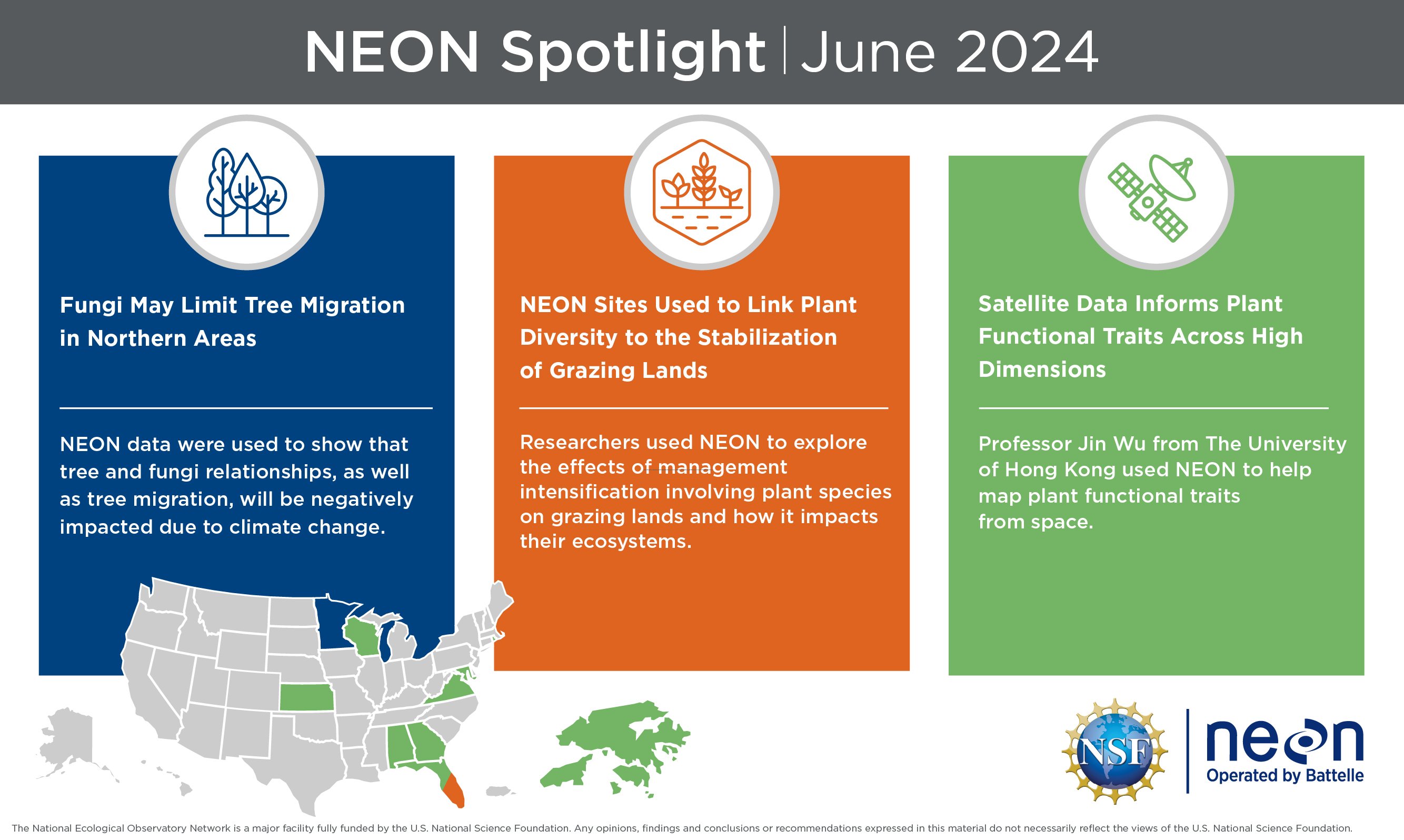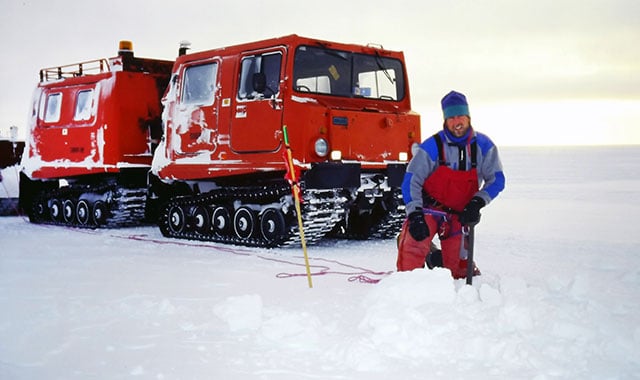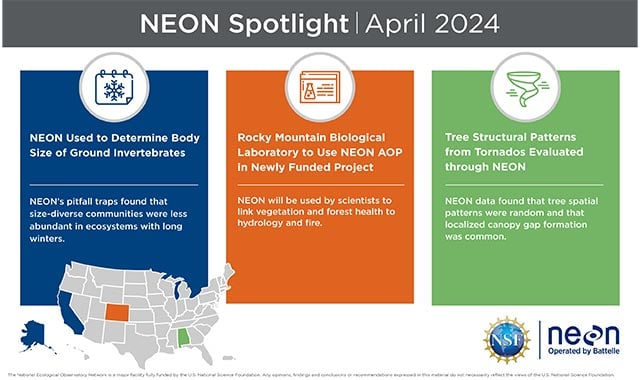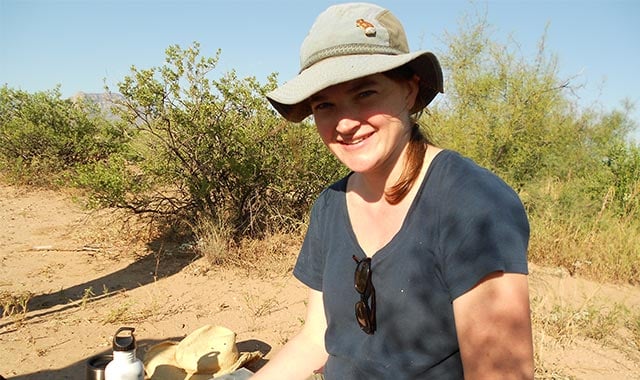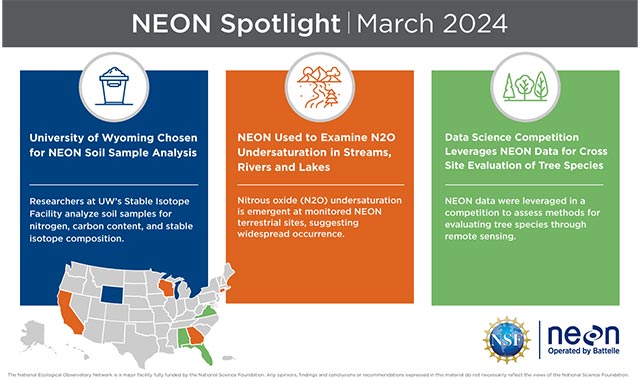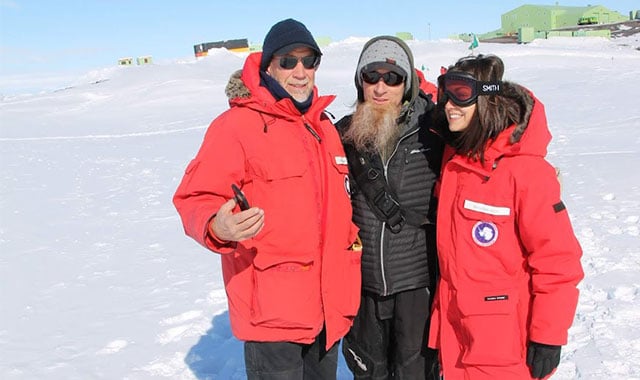Battelle’s Arctic Deputy Program Manager Tom Hutchings has had a Polar Career
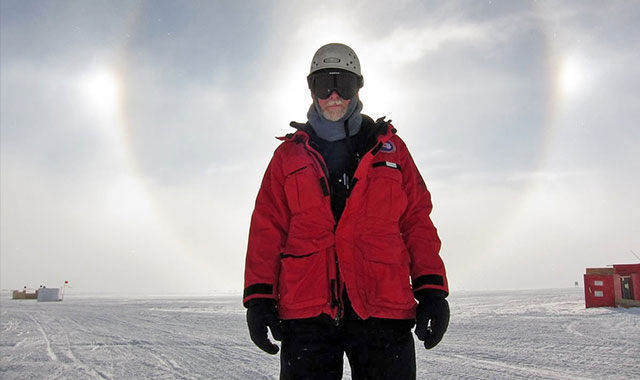
Ever talk to someone who says they’d never have believed you if you told them when they were young what they’d end up doing for a living? Tom Hutchings is one of those people, and his career path is an all-world doozy.
Hutchings is the Deputy Program Manager for the Arctic Research Support and Logistics Services (ARSLS) program that Battelle operates for the National Science Foundation. His resume includes nearly 30 years supporting polar programs, with more than five years in combined deployments spent at the South Pole, where he managed science and construction projects, including construction of the world’s largest neutrino detector observatory (Ice Cube), funded by NSF.
He came to Battelle when it won the Arctic program which aligned roughly with the beginning of the COVID pandemic. But his story starts in New Hampshire, where he still lives and where he attended the University of New Hampshire. A hockey player and winter enthusiast as a kid, he took his education to the mountains of his home state, where in 1982 he met his future wife of 40 years and worked at a place called the Appalachian Mountain Club. “We took various jobs to stay in the mountains,” he said, “Back country jobs, construction jobs, managing a trail program and a volunteer program. It was there we met other people who had a connection to the Antarctic program. That piqued my curiosity. The next thing we know, we were both applying for jobs in the Antarctic and ended up there in 1990. That’s where my polar career started.”
Hutchings worked for Antarctic Support Associates as a carpenter, then foreman. “The South Pole is the closest thing I can think of to being on another planet,” he said. “At the South Pole it’s cold and I was usually first in and last out over the 17 austral summer seasons and it would dip down to 60 (Fahrenheit) below in the shoulder seasons. It bites any exposed skin you have. No Jack Frost nipping. It’s a bite.”
Working construction at the South Pole was tough, but he’d done it in northern New Hampshire, so it wasn’t his first rodeo. “It was bitter. Northern New Hampshire is dark and damp vs. a dry and sunny summer at the South Pole. I think I have been colder in New Hampshire.”
Working five months at a time through the 1990s, he became a construction manager while his wife Gloria was a cargo and logistics manager for the same program. The two of them shared an eight-by-eight-foot room and had a blast, “And we’re still together,” he said with a laugh.
Only during 1993, when he was in Greenland and she was at Palmer Station on the Antarctic Peninsula did they ever spend significant time apart. By 1998 the couple had their first child and Gloria retired from polar programs to go back to the less dangerous Appalachian Mountain Club.
In 2000, Raytheon captured the Antarctic contract and Hutchings stayed on to support projects and researchers. That’s when he got involved with the Ice Cube Neutrino Observatory. Hutchings was the support manager of the NSF-funded program that drilled 86 holes with a 5-megawatt hot water drill over the course of seven seasons.
Ice Cube comprises a consortium of more than 50 different universities around the globe with the University of Wisconsin as the lead institution. The $279 million project installed 86 strings of instrumentation a mile and a half deep into the ice. The neutrino detecting strings were installed before the water refroze in the deep holes. “I became the Ice Cube manager for the logistics and construction side of that project with Raytheon,” he said.
In 2006, Hutchings went to work for the University of Wisconsin as Implementation Manager for the Ice Cube project. When it was completed, he took time on his own to scratch an entrepreneurial itch, working on residential and commercial construction projects with private investors.
But by 2017, UW got funding for upgrading the Ice Cube project and the South Pole called his name again. He again became the implementation manager of the upgrade and in 2019 got an offer from one of his friends and colleagues, Battelle Senior Capture Manager and former lead ice driller Forest Banks. “We’d stayed in touch and he let me know about Battelle pursuing the Arctic contract with NSF and asked if we won, would I be interested in being the deputy.”
Since then, and on the other side of the world in the Arctic, the ARSLS contract is an NSF-funded polar program that provides infrastructure, logistics and operations for researchers in the United States Arctic program. As Deputy Program Manager, Hutchings co-manages science support, air & vessel operations, procurements, and managing and upgrading facilities at Summit Station in Greenland and Toolik Field station in Alaska.
“I’ve really enjoyed Battelle,” he said. “It’s a supportive environment and they take care of the people well. It’s an organization that really understands not only science, but the importance of supporting and enabling others to accomplish big scientific goals in complex projects. Coming from university and government and private sector, this is really a sweet spot.”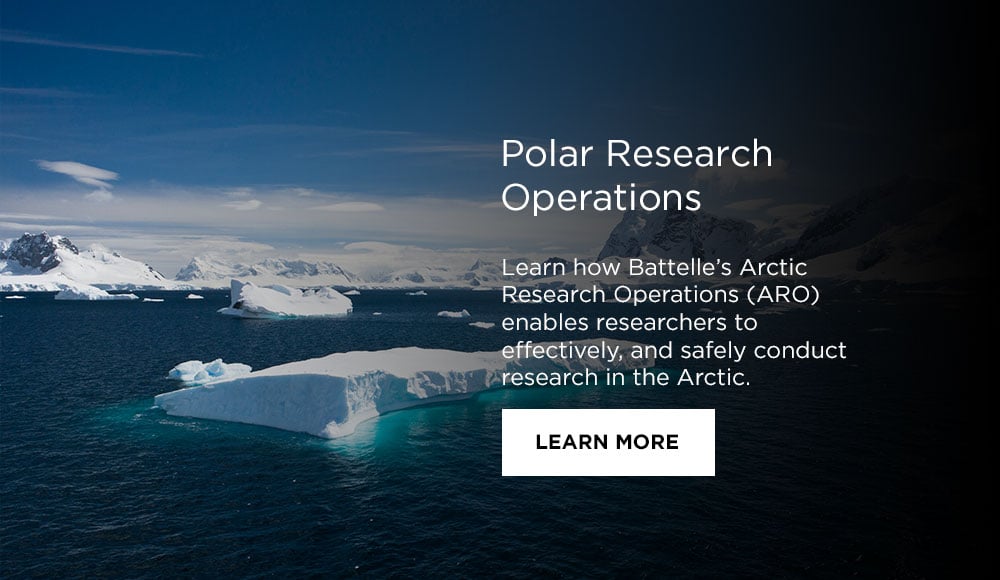
Related Blogs
BATTELLE UPDATES
Receive updates from Battelle for an all-access pass to the incredible work of Battelle researchers.
